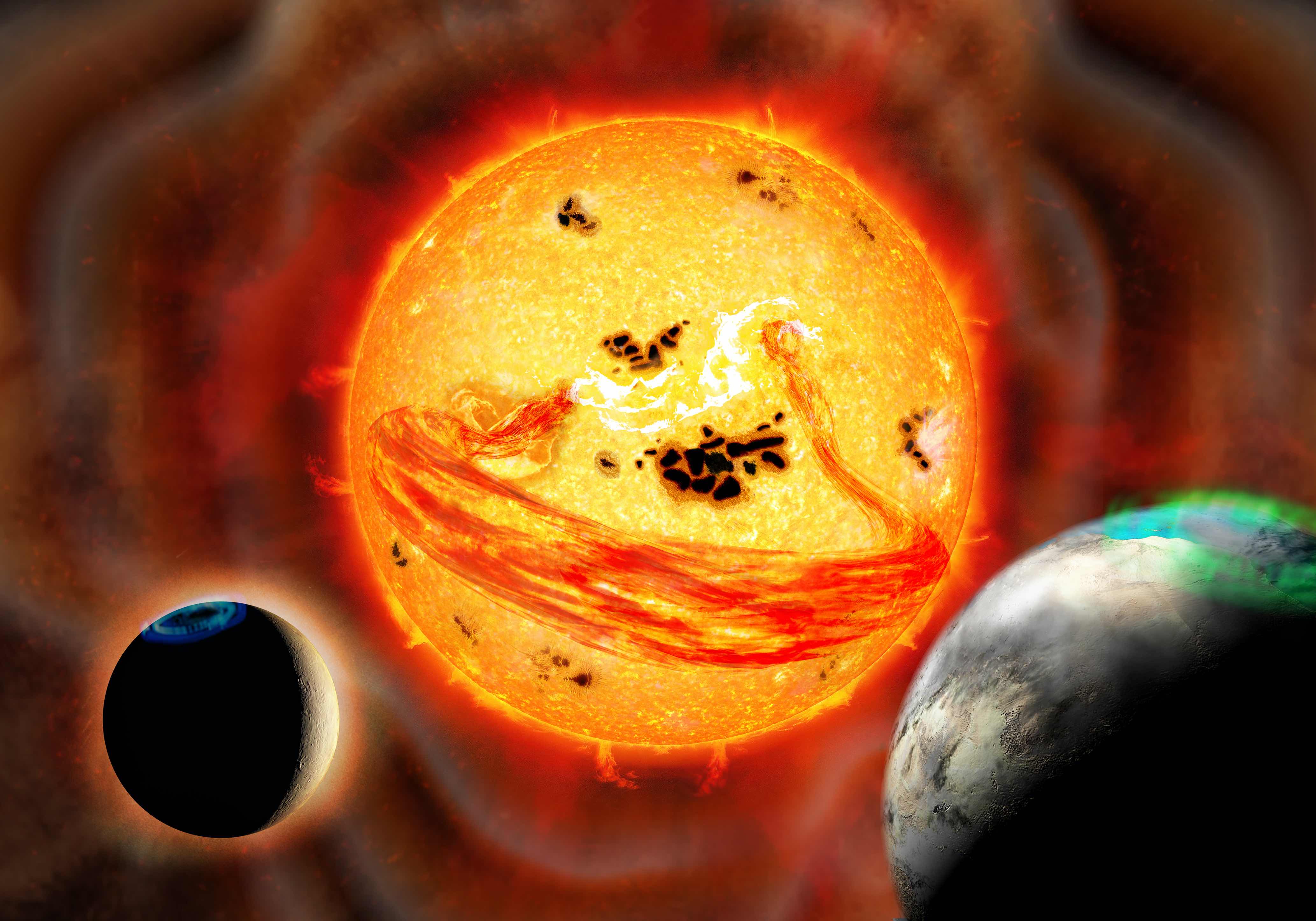Earth and Planetary Sciences News
Probable detection of an eruptive filament from a superflare on a solar-type star

Credit: NAOJ
A research group including Kosuke Namekata and Hiroyuki Maehara at the National Astronomical Observatory of Japan (NAOJ), and Yuta Notsu at Tokyo Institute of Technology (conducting overseas research at University of Colorado) has been monitoring EK Draconis, a young solar-type star located 111 light-years away in the constellation Draco, the Dragon. Using several satellites and telescopes, including the 3.8 meter Seimei Telescope in western Japan, the group captured observational data indicating that a superflare had erupted from the star. This is the first optical spectroscopic observation of a superflare on a Sun-like star. Associated with the superflare, they also found evidence for an eruption of a supermassive filament of plasma, gas so hot that it breaks down into ions and electrons. This was another world’s first discovery for a Sun-like star.
The filament was large, 10 times more massive that any mass ejection ever recorded on the Sun, and fast, 500 km/s (about 1 million mph). These results are important for thinking about the origins of life on Earth and looking for life on other planets.
These results appeared as Kosuke Namekata et al. “Probable detection of an eruptive filament from a superflare on a solar-type star”in Nature Astronomy on December 9, 2021.





